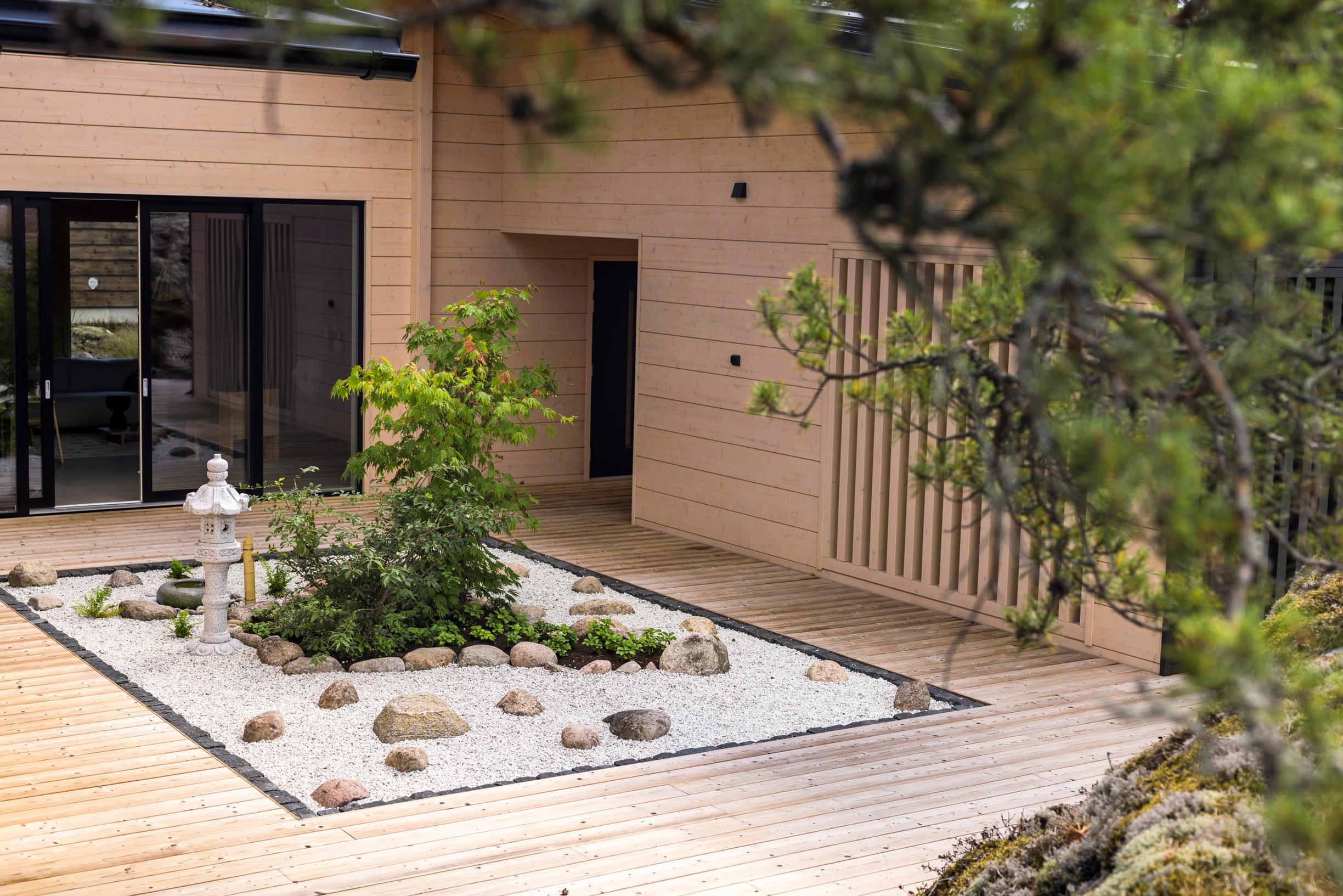
Create an authentic Japanese-style garden: tips from architect Asako Hashimoto
Rugged stones, trickling water, evergreens, and framed views. You can transform your entire yard into a Japanese-style garden or set aside just a small corner as a dramatic focal point. Even a balcony can host a miniature piece of Japan. Architect Asako Hashimoto shared her expert tips. Most of the photos in this article are from a house and garden she designed in Naantali.
1. Four seasons
In a Japanese garden, it’s not just the colorful splendor of summer that matters—nature is also appreciated in autumn, winter, and spring. Our four seasons present a wonderful opportunity for this. Enjoy how fall foliage shifts the color palette, or how snow on stones or shrubs transforms their shape.

2. A miniature landscape
A Japanese gardener aims to create a miniature landscape that mirrors the natural world. Surrounding or imagined nature continues seamlessly into the garden space. You can either extend the local environment into your yard or build the landscape you’ve always admired.
A Finnish landscape by the water already reflects the view often sought in Japanese gardens.
3. Bring water into your yard
A traditional Japanese garden always includes water in some form. If it’s not naturally present, it’s created. A bright gravel surface can also resemble water. In Japan, people also use sand that is carefully raked into wave-like patterns reminiscent of water.

4. A basin or a tsukubai?
The sound of trickling water is very calming. A small water feature can fit in any yard, even on a balcony. Browse store selections or build your own fountain or stream. A shallow basin makes a minimalist water element. A tsukubai is a stone basin for washing one’s hands before entering a tea house.
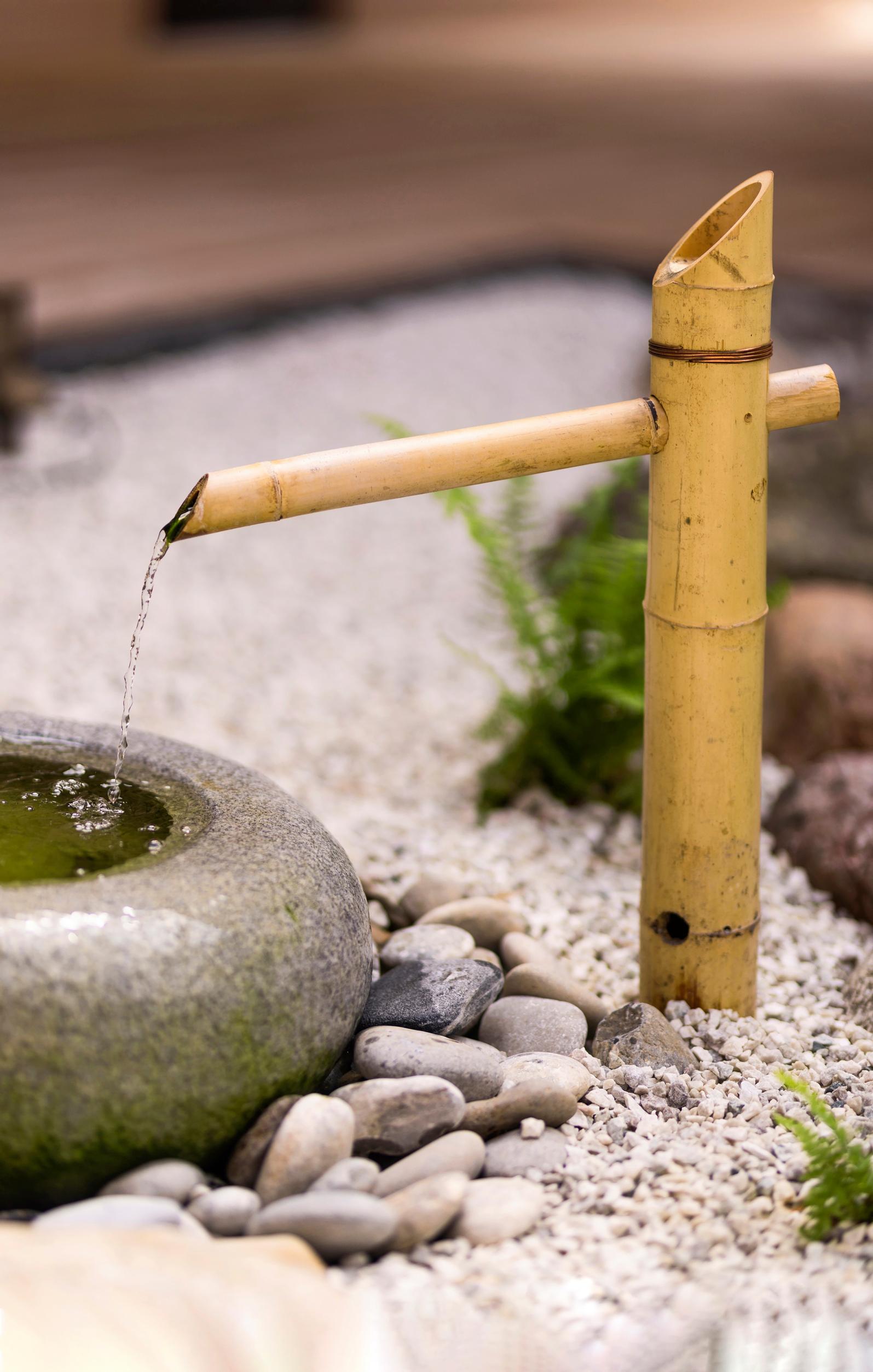
5. Rough stone is a treasure
We Finns are fortunate to have an abundance of characterful natural stones. Rough is usually better than perfectly rounded. In a Japanese garden, stones can represent a mountain or an island rising from the sea. If you uncover stones during groundworks, don’t haul them away—use them in your own yard.
6. Give it a turn first
In Japan, every stone is placed with great care. It’s turned in different directions first to see which side looks best. The sharpest point usually isn’t placed facing up, and the roughest surface is turned away from view. Japanese gardens make frequent use of black or bluish stone, but here, our naturally reddish hues also work well.
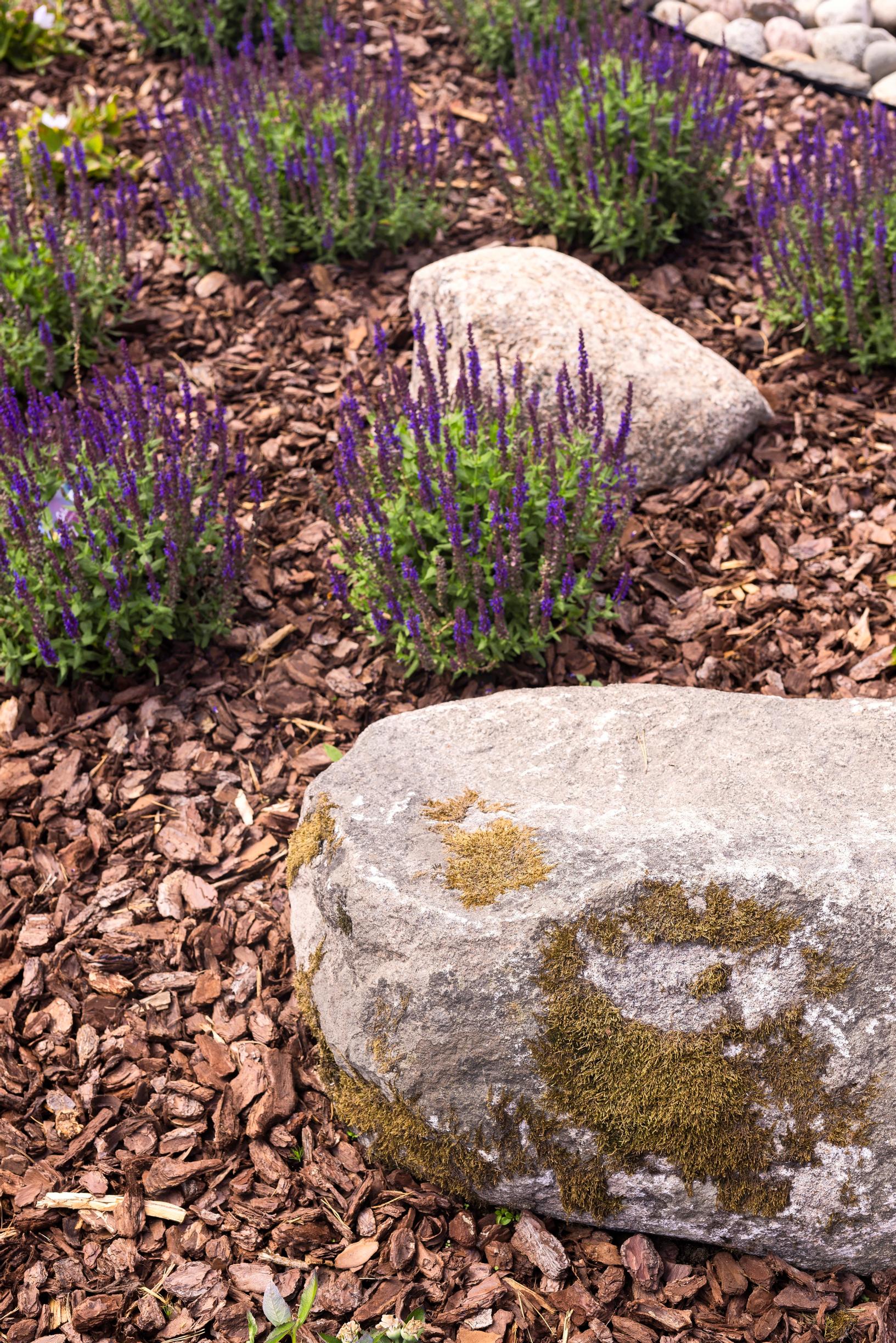
7. Define the view
In Japan, gardens are often enclosed with shrubs or fences. It’s not always necessary to block out the surrounding scenery completely. Bamboo doesn’t withstand Finnish winters well, but a fence with vertical or horizontal wooden boards is a good alternative. White paint tends to stand out too much. Opt for the natural hue of wood or a slightly darker tone.
8. Discover a “landscape stone”
Have you ever examined a natural stone up close? You might spot a darker stripe that, in your mind, becomes a river or a sea horizon. You’ve discovered a “landscape stone,” which is highly valued in Japan. Place it where it can be appreciated. These patterns show best when the stone is wet.
9. Paths lead the way
Use flat stones to create a pathway in your garden, guiding visitors toward beautiful spots. A winding path with closely spaced stones slows foot traffic in meaningful places. Wider spacing encourages a quicker pace. You can also buy ready-made stepping stones.
10. Step onto a bridge
A bridge helps you cross real water or just a gravel-based stream. A Japanese-style bridge is minimalist, so skip extra decorations. Use natural materials like stepping stones or wood—larch weathers to a lovely gray hue.
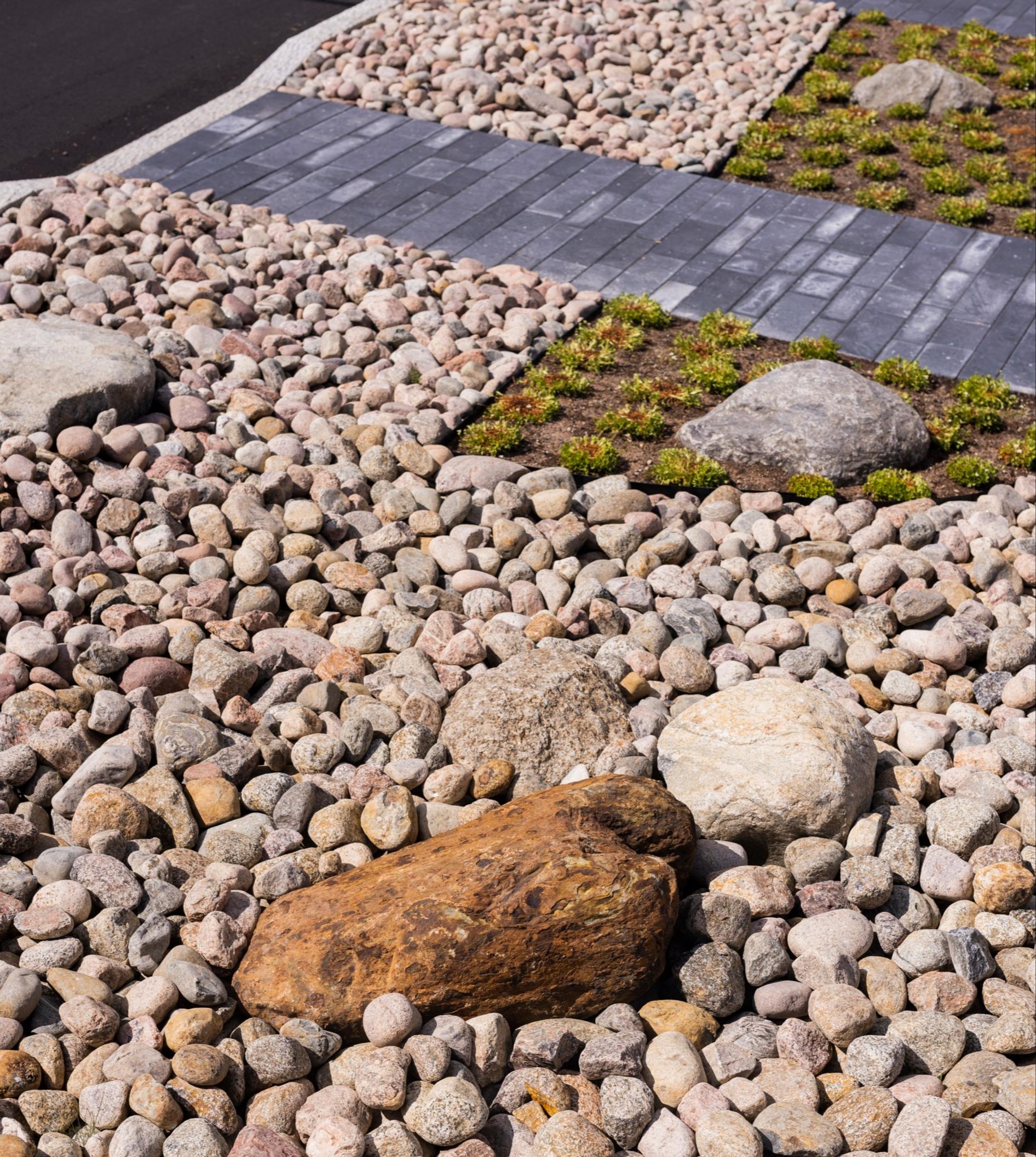
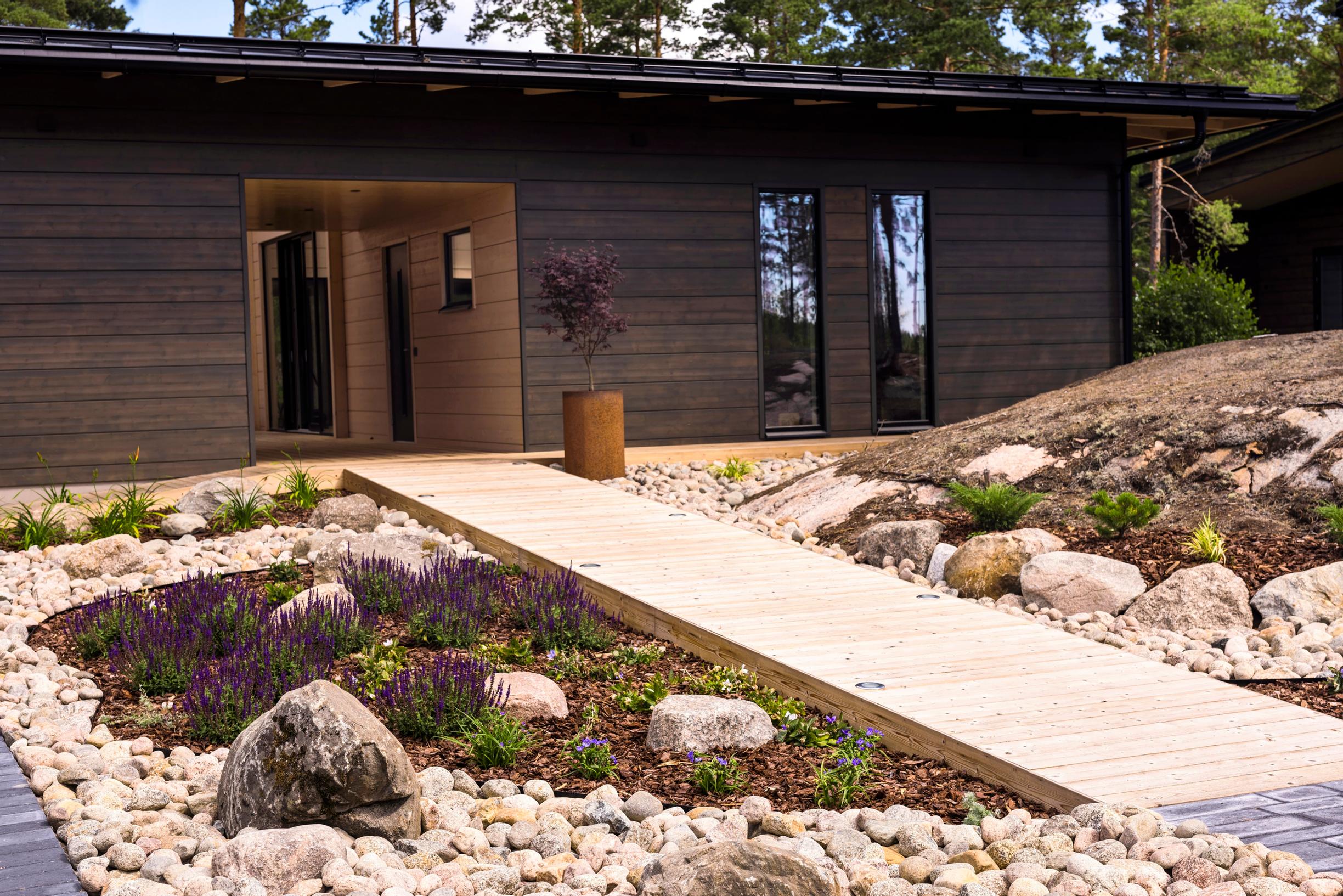
11. Create a Japanese corner
You can also carve out a single area of your yard as a focal point. Choose a few stones, an evergreen, and a water feature that transport your thoughts far away to Japan. Separate this nook from the rest of the yard with a hedge or a tall tree.
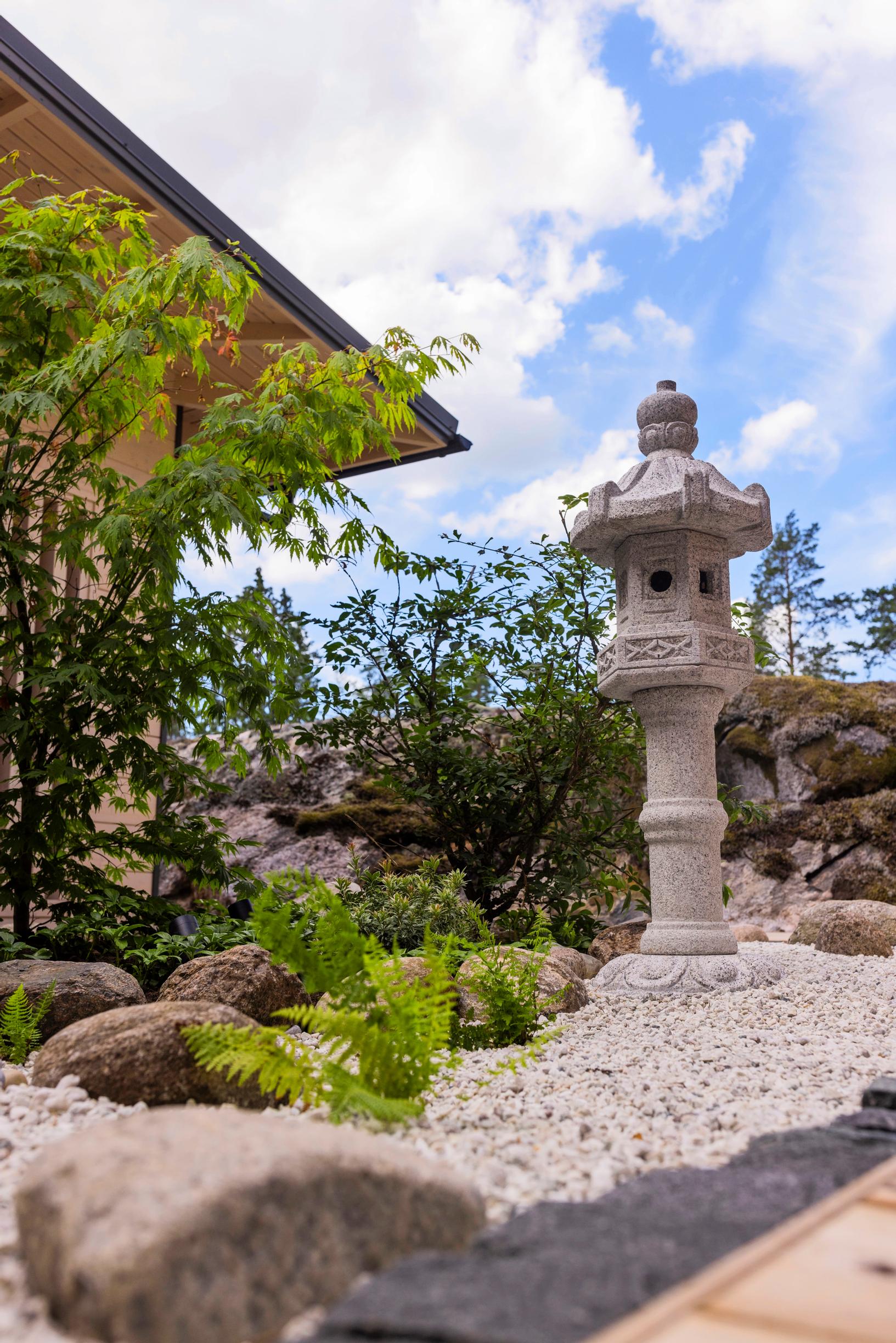
You can bring a piece of Japan onto your balcony with a collection of potted plants arranged around a few landscape stones.
12. Flowers in moderation
Japanese gardens use fewer flowering plants than we might be accustomed to. Choose them thoughtfully so that only one or two species bloom at once. In Finland, dependable choices include ferns, hostas, pachysandra, irises, and daylilies. Azaleas also provide a vibrant splash of color.
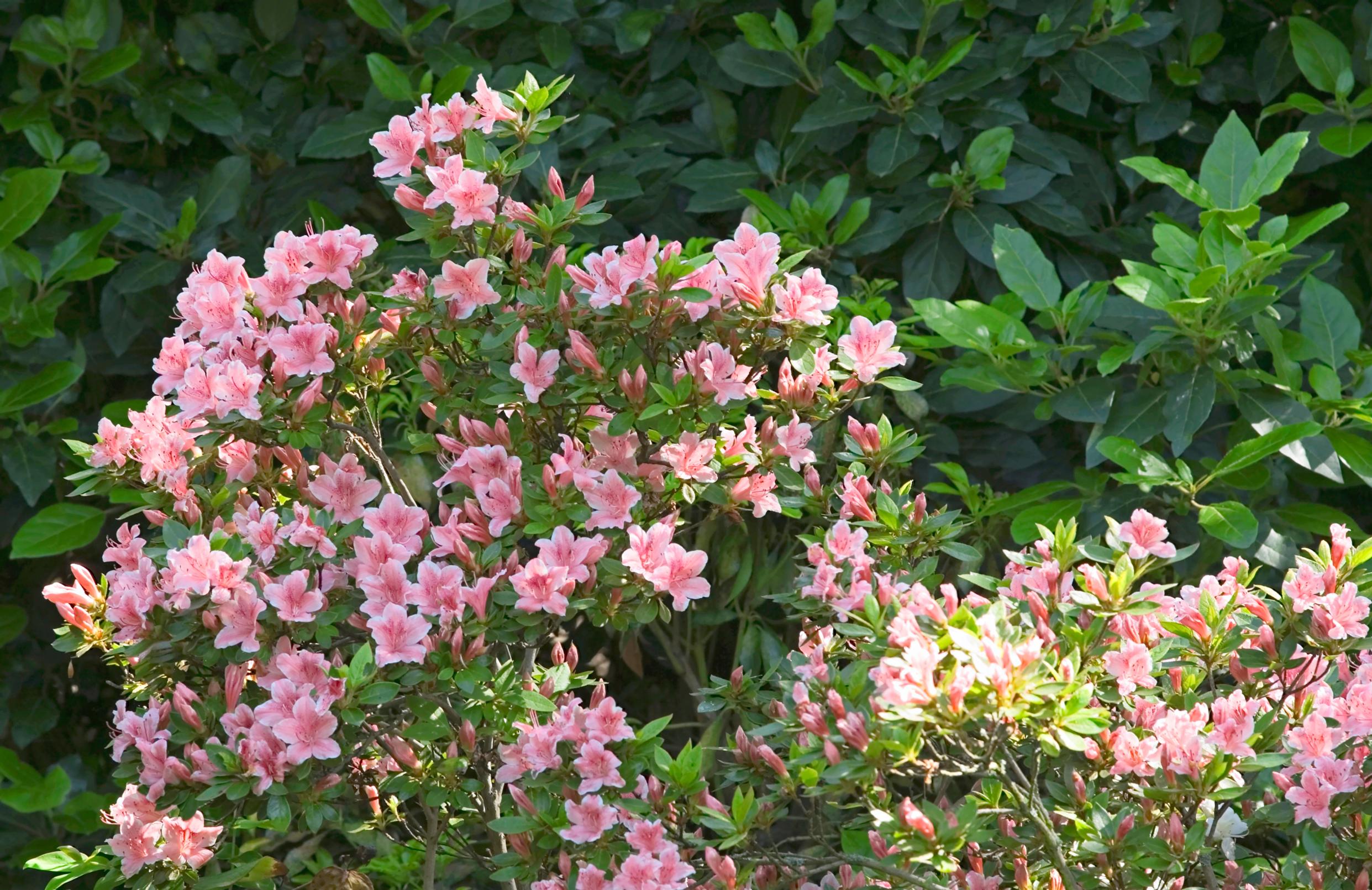
13. Favor evergreen plants
Among Finnish trees, pine fits naturally into a Japanese-style garden. Low junipers work well as groundcovers, adding greenery even in snowless winters. Of the evergreen species that can be shaped, yew is the best option here.
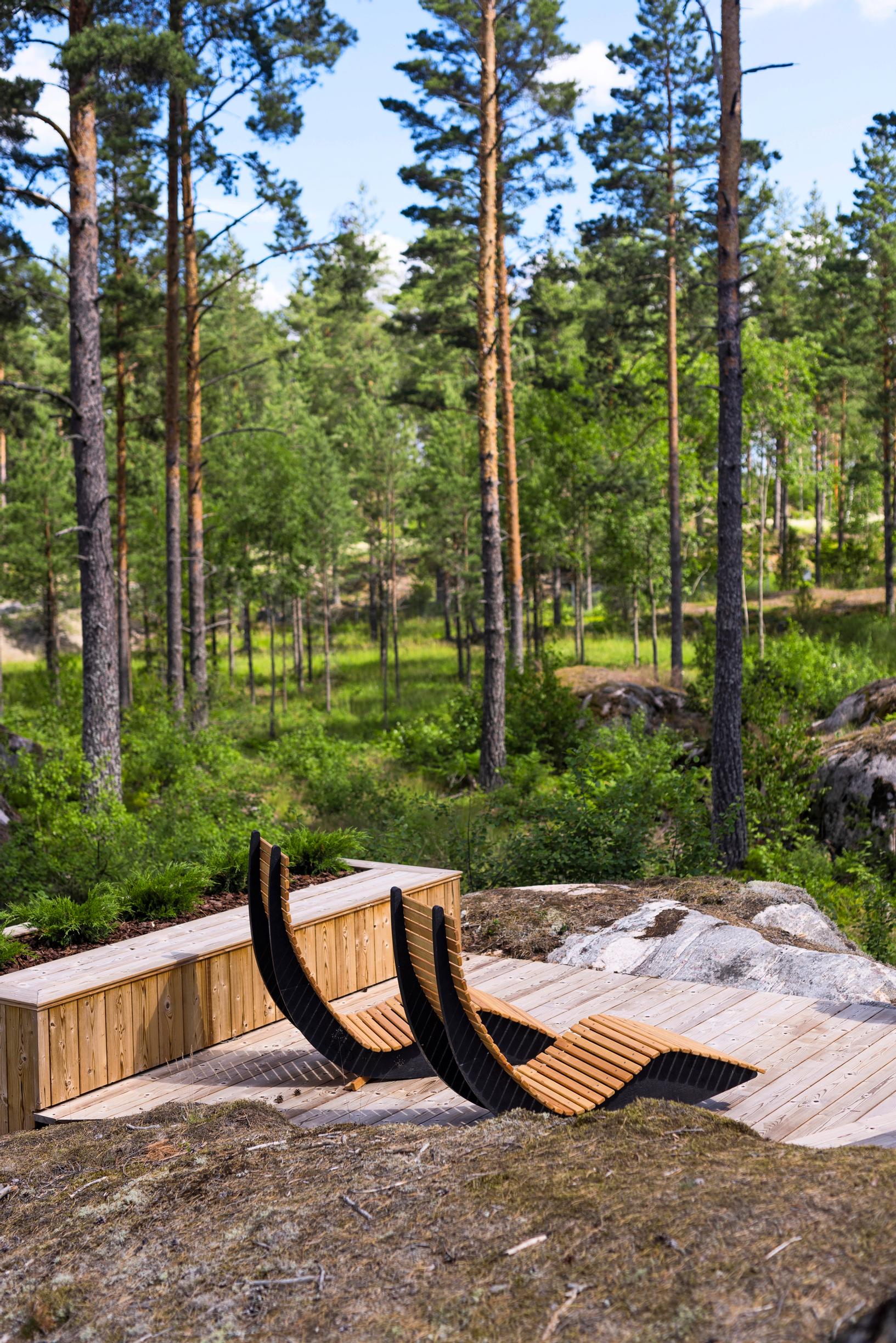
After flowering, saxifrage looks like moss, which is highly prized in Japan.
14. Grasses for movement
Grasses pair beautifully with stones and evergreens. Swaying in the wind, they bring pleasant movement and sound to the garden. Try hakone grass or Japanese sedge, for example. Grasses also look lovely in containers.
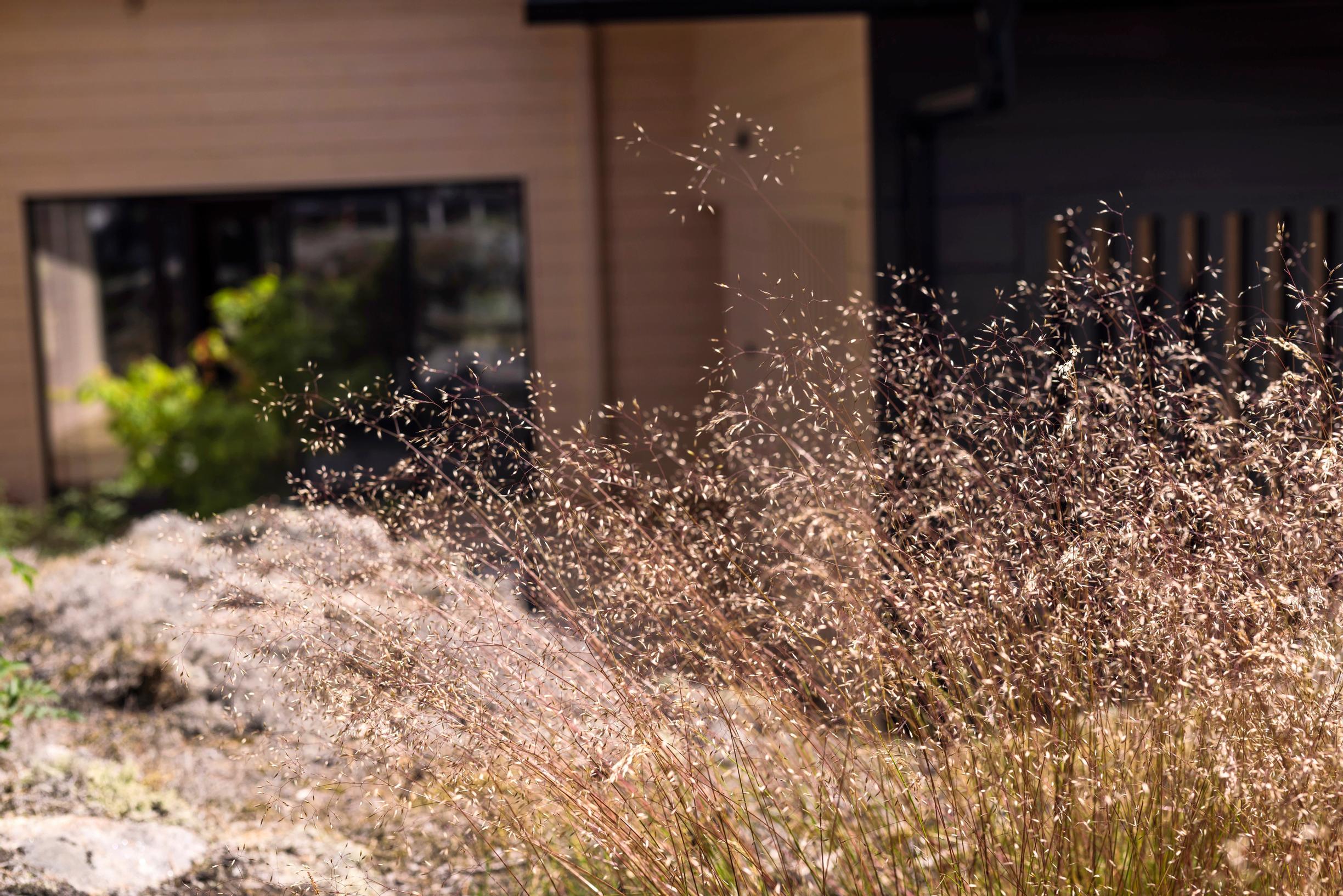
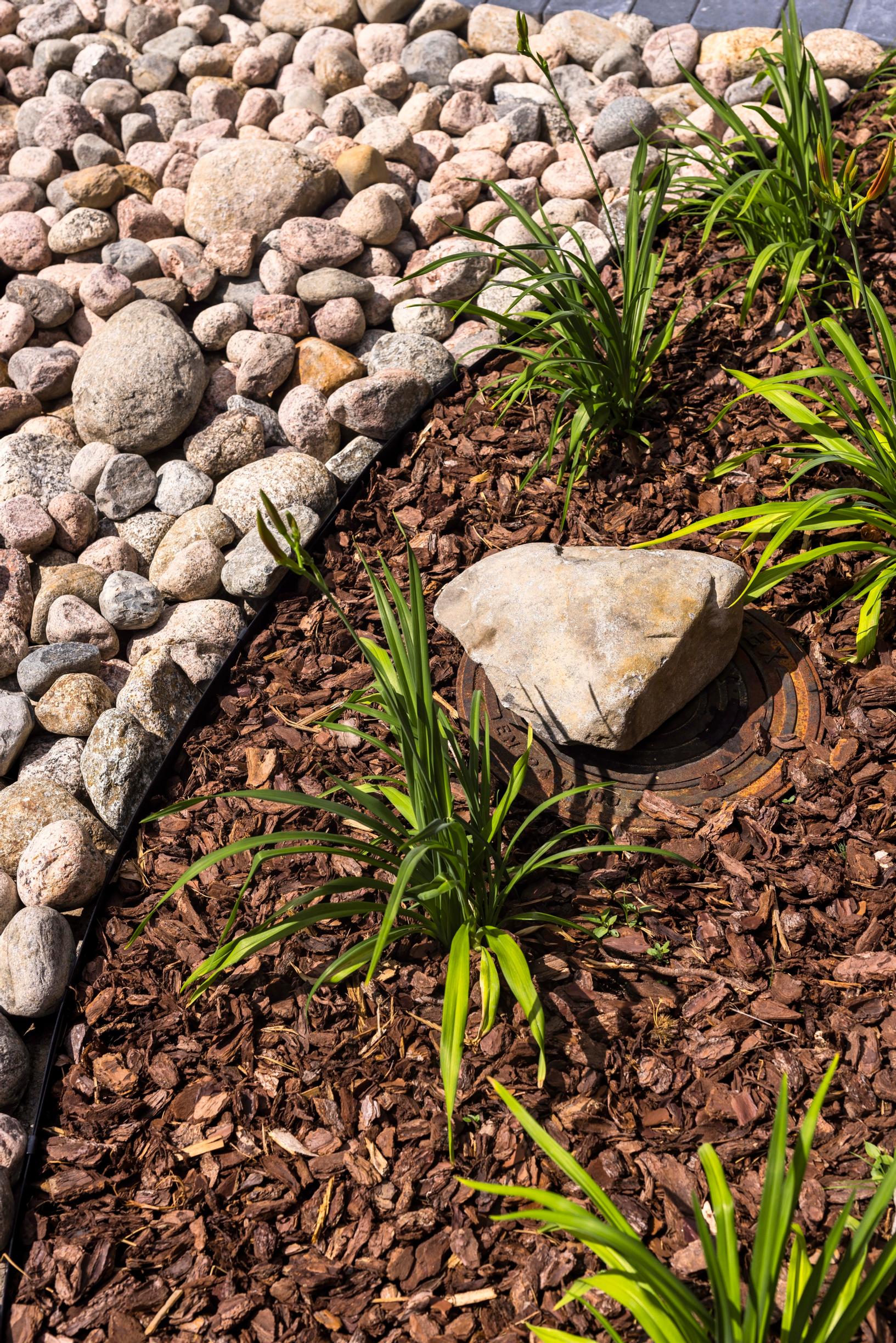
15. Rounded shapes
Pruning shears are indispensable for a Japanese gardener and are used throughout the growing season. In Japan, small-leaved azalea (Satsuki) is common, but it doesn’t do well in Finland. Instead, shape shrubs such as spirea or yew. Spirea or warty spindle naturally develop a rounded form.
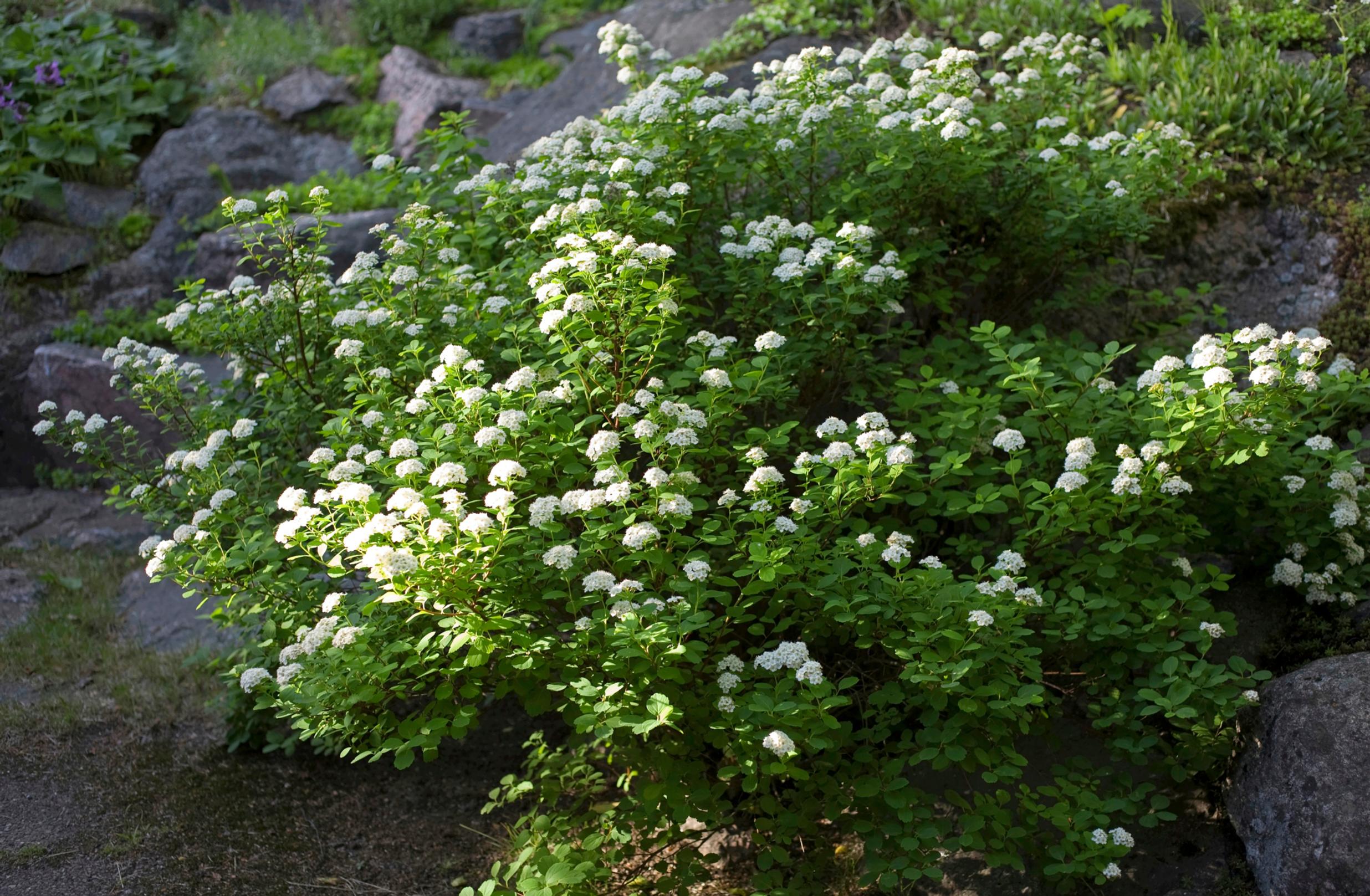
16. Color from a small maple
A beautiful Japanese maple or bloodgood Japanese maple is a popular wish. They don’t handle Finnish winters well, so the safest plan is overwintering them in pots kept in a cellar. Korean maple and Hokkaido maple adapt better to Finland. They can survive when planted in southern Finland (comparable to USDA Zones 5–6) or in a sheltered spot in central Finland (around USDA Zone 4).
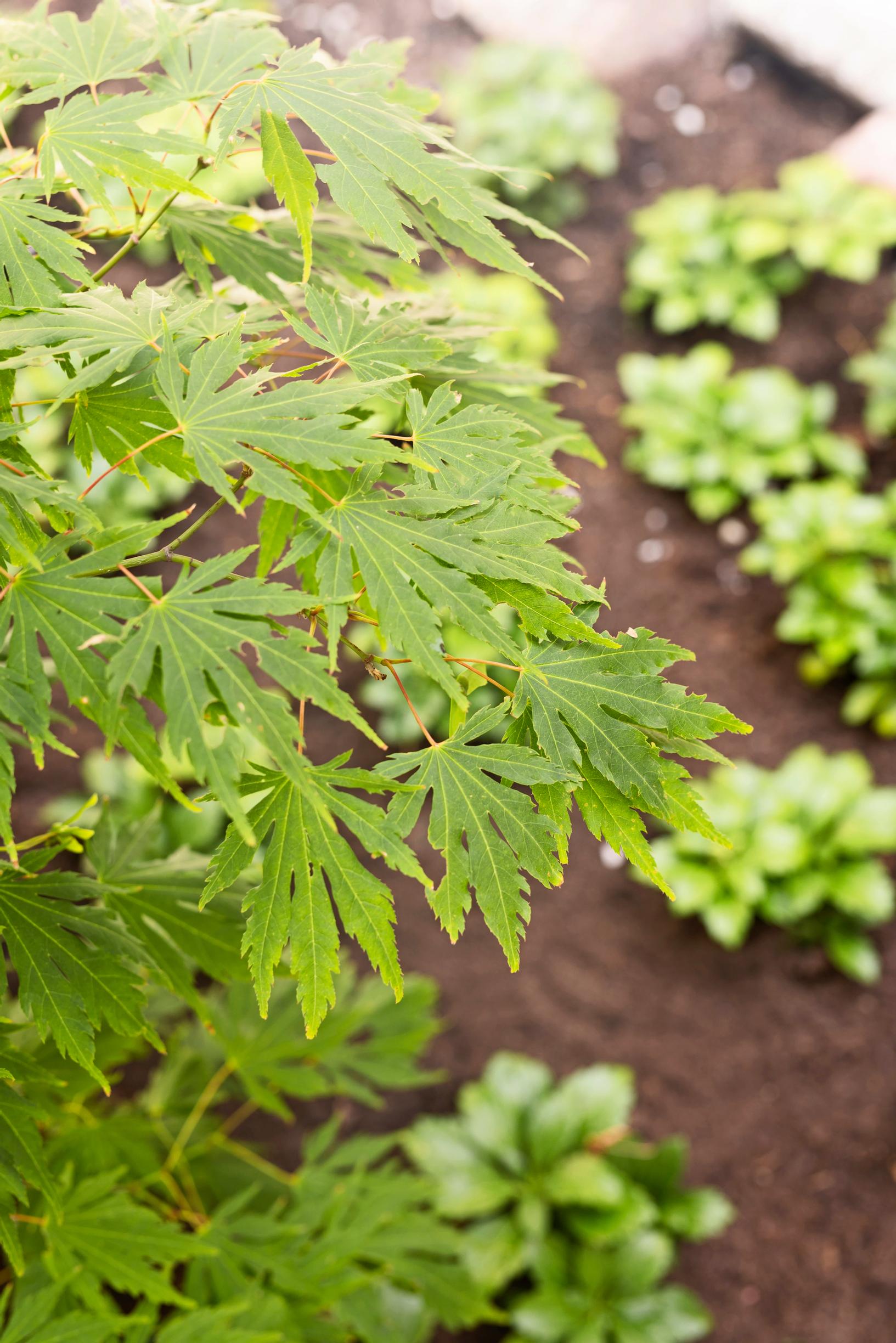
17. Enjoy hanami
To experience hanami, the cherry blossom festival, consider planting prunus sargentii. It blooms pale pink for about a week in May, typically at the same time its leaves emerge. In autumn, it shows off vibrant fall colors. Sour cherries and bird cherries also provide a Japanese vibe. Even our native bird cherry blooms beautifully in spring.
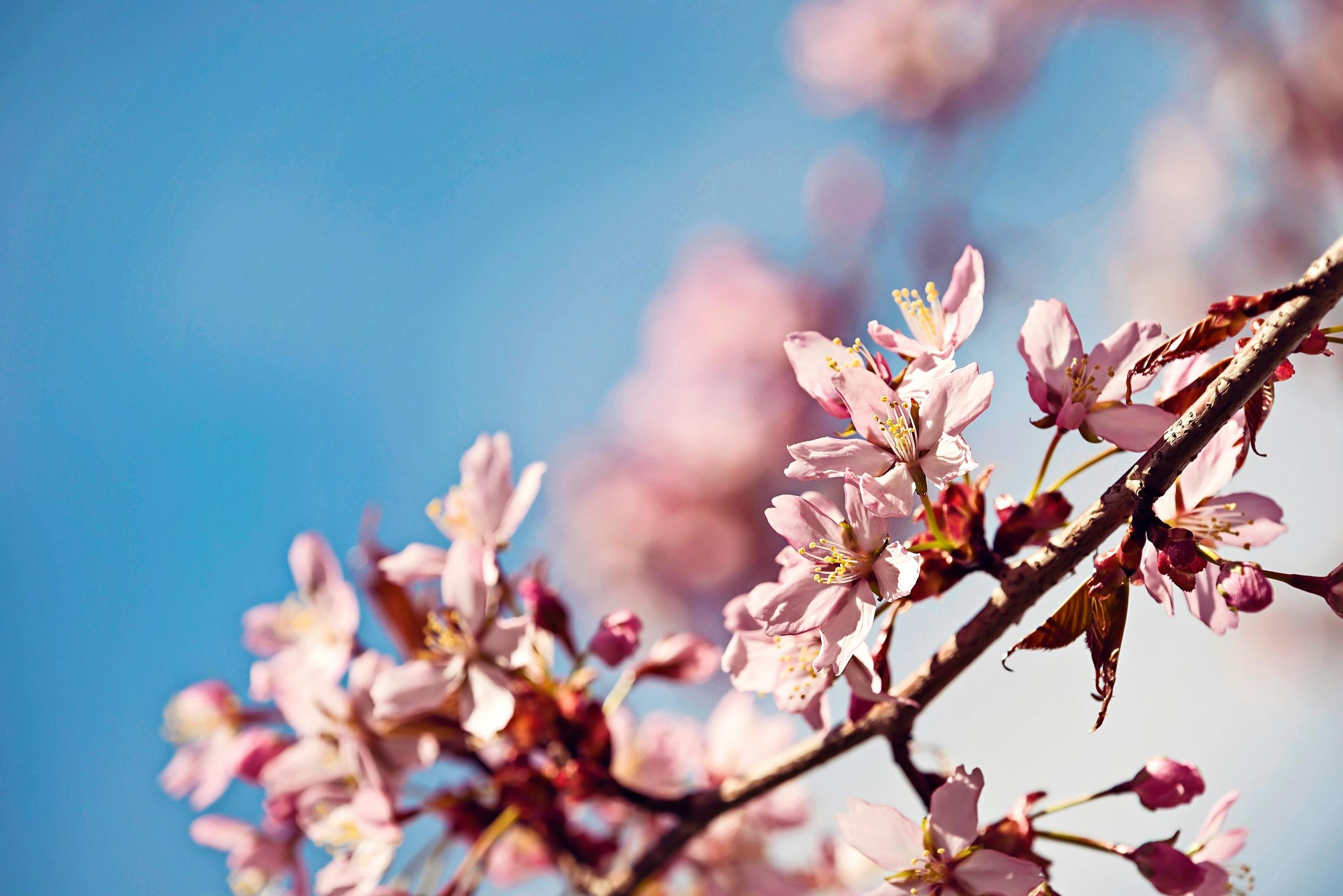
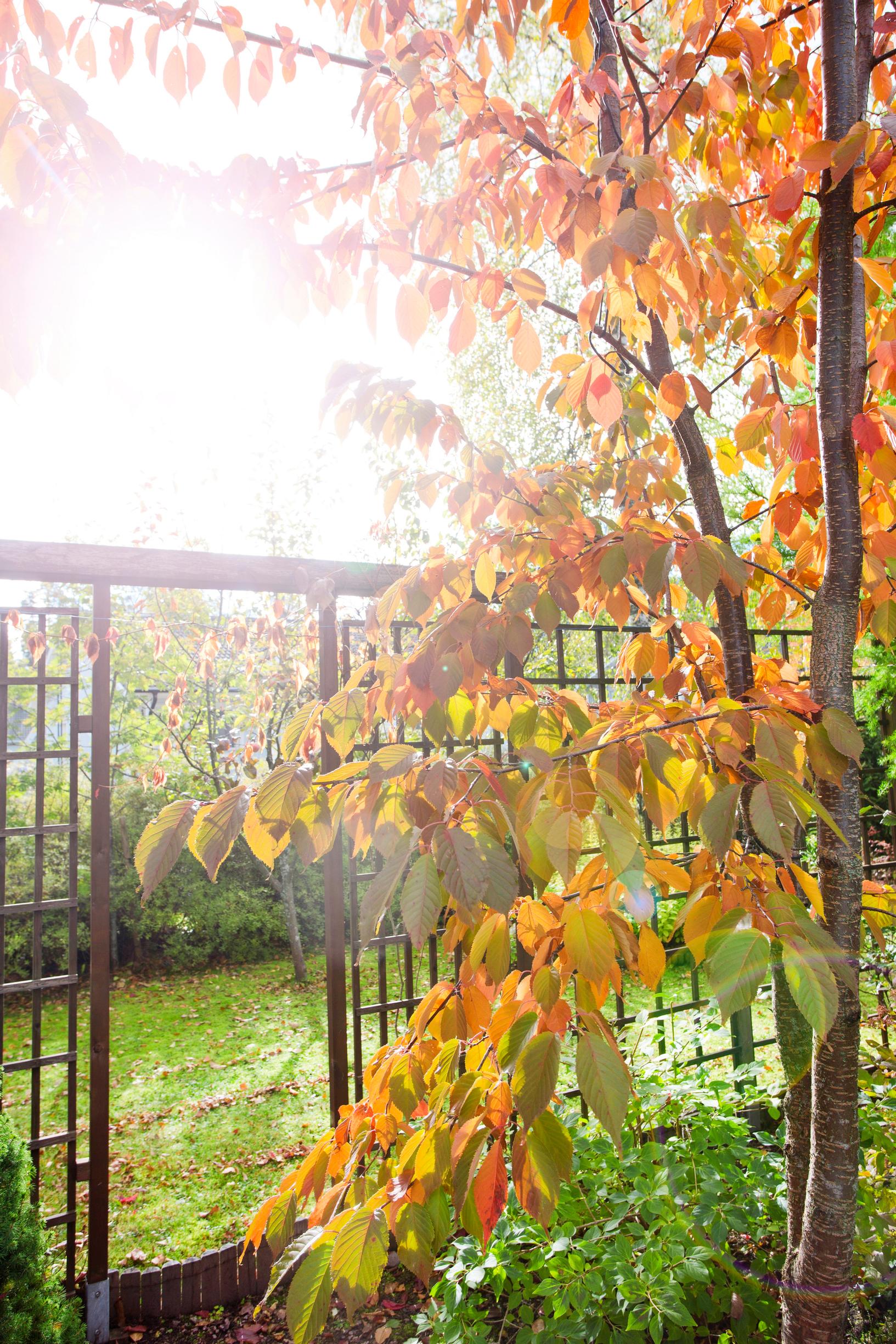
18. Japanese garden: be inspired here
- Roihuvuori’s Japanese-style Garden, Helsinki. Learn about the sargent cherry, even outside of its blooming season.
- Lounatuuli Park, Mihana-en, Hyvinkää. This award-winning Japanese garden is located in Hyvinkää’s housing fair area.
- Kadriorg Japanese Garden, Tallinn. A fantastic day trip destination year-round, especially after you’ve seen Tallinn’s main attractions.
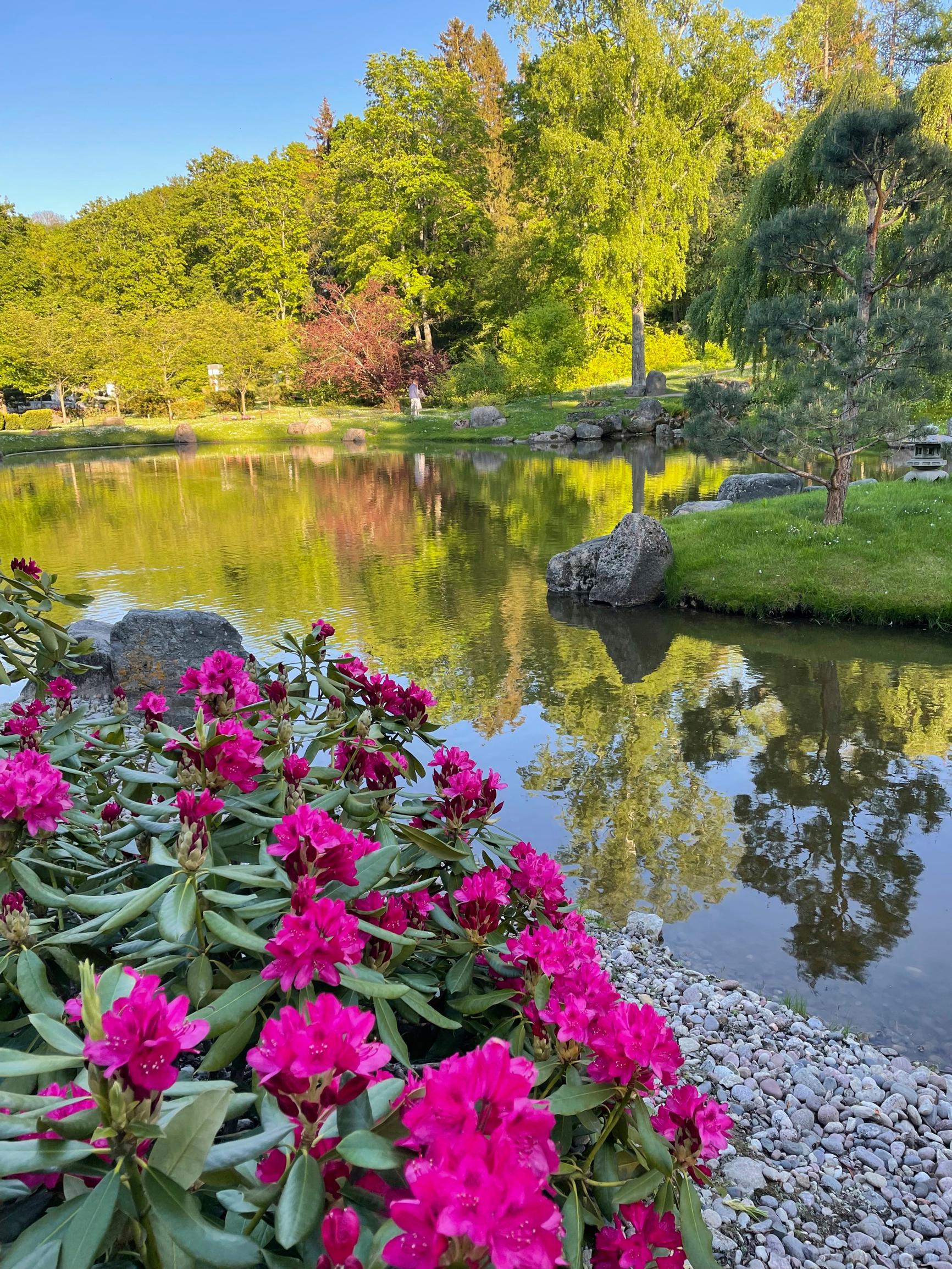
Japanese garden—more design tips
Text by Auli Honkanen
The concept of a Japanese garden is to represent nature—or the idea of nature—at its most beautiful. The garden is like a work of art viewed from one or a few carefully chosen angles. It’s also used for meditation and relaxation, offering a connection to nature in the midst of everyday busyness.
Create optical illusions of perspective
In a Japanese garden, perspective is used to make the space appear larger than it is. Objects close up look bigger than those in the distance. By placing smaller stones at the back of the garden and larger ones at the front, the area can seem deeper than it really is.
Another way to enhance three-dimensionality is to divide the garden into three zones: front, middle, and back. Stones and plants are arranged in these sections so that even a small yard can appear both longer and wider.
The middle zone should capture the viewer’s attention with a striking element, like a moss-covered stone or a distinctive plant. This feature interrupts the view between the front and back sections without fully blocking it, carrying the eye from the front to the back and enhancing depth.
Color also helps create illusions. Lighter-toned plants belong in the background, while dark- or bold-colored plants go in the foreground, making the rear of the garden seem even farther away, as if in a gentle mist.
Arrange things asymmetrically
A Japanese garden is like a miniature world, where each element is carefully balanced.
Western garden traditions often favor symmetry, as seen in Baroque gardens. Japanese garden design, by contrast, aims for asymmetry. Stones, for instance, are placed in odd-numbered groups in an off-center arrangement so that every angle offers a different view.
Leave some spaces open
A Japanese garden relies on water, stones, and plants, but it’s important not to overcrowd them. Keeping some open space allows light and shadow to play.
Use plants sparingly
Plants are chosen with restraint. You won’t see an explosion of flowers in a Japanese garden. Instead, plants are selected for their shapes and colors. The plant variety is usually limited to enhance repetition and create a soothing effect. Many shrubs and trees are pruned into specific forms, with branches coaxed to resemble mature, elegant trees. Shrubs are often rounded into soft contours.
Blend buildings with the garden
In a Japanese garden, the house and outbuildings should integrate with the landscape. Garden structures and fences echo the house’s design. A board fence might mimic the house’s siding, and wooden surfaces harmonize with greenery.
Strive for a natural impression
- Avoid “floating” stones! Bury stones at least halfway to achieve a natural look.
- Choose stones of various shapes. Completely round rocks can appear unnatural if no other shapes offset them.
- Decorative rocks and sands can be tempting. Don’t overuse them, or the result may look artificial.
- Mosses, lichens, and ferns are ideal for a Japanese-inspired landscape. They grow well throughout Finland.
- Japanese-style ornaments aren’t the main point—they’re simply accents that hint at human presence. Rely on natural elements like stone, water, and plants.



